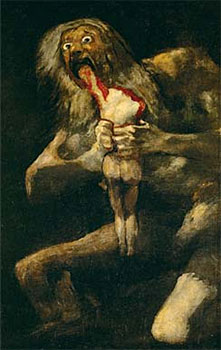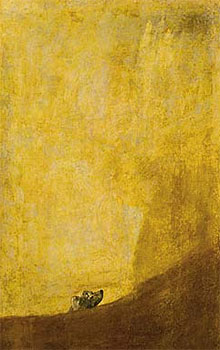| goya
The Secret of the Black Paintings
Venerated as the first modern artist, Francisco Goya produced nothing more abrasively modern than the series of 14 images known as the Black Paintings, which a half-century after his death were cut from the walls of his country house on the outskirts of Madrid. Even today, when you come upon them in the sanitized confines of the Prado Museum, these nightmarish visions can unmoor you. An ancient crone grins ghoulishly over a bowl of food; a demonic figure whispers in the ear of a stooped old man; a midnight coven surrounds a goat-headed sorcerer; a dog raises its head forlornly; and, most famous of all, a raggedy-bearded man with bulging eyes devours a human form that is already reduced to red meat. Of this last iconic image -- called ''Saturn,'' after the Titan who ate his children -- the art historian Fred Licht has written that it is as ''essential to our understanding of the human condition in modern times'' as Michelangelo's Sistine Chapel ceiling is to our grasp of the 16th century.
So it made perfect sense that Scala Publishers, which specializes in art books and museum catalogs, would commission a book on Goya's Black Paintings. To write it, the editor, Antony White, signed up Juan Jose Junquera, a professor of art history at Complutense University in Madrid who is best known for his studies of 18th-century Spanish furnishings. A burly, gray-haired man, Junquera, 60, has made a career of tunneling through the labyrinthine Spanish archives. During the eight years that he researched his doctoral thesis, on the art of the court of Goya's royal patron, Charles IV, he spent five hours every weekday morning in the archives. ''It is amusing,'' he says. ''You can touch everyday life. Their way of eating, their way of dressing, their way of thinking -- their whole life is before your eyes.'' Having taken on the subject of Goya's Black Paintings, Junquera proceeded to scrutinize the documentary record. Before long, he realized that he had a problem.


[more] |

